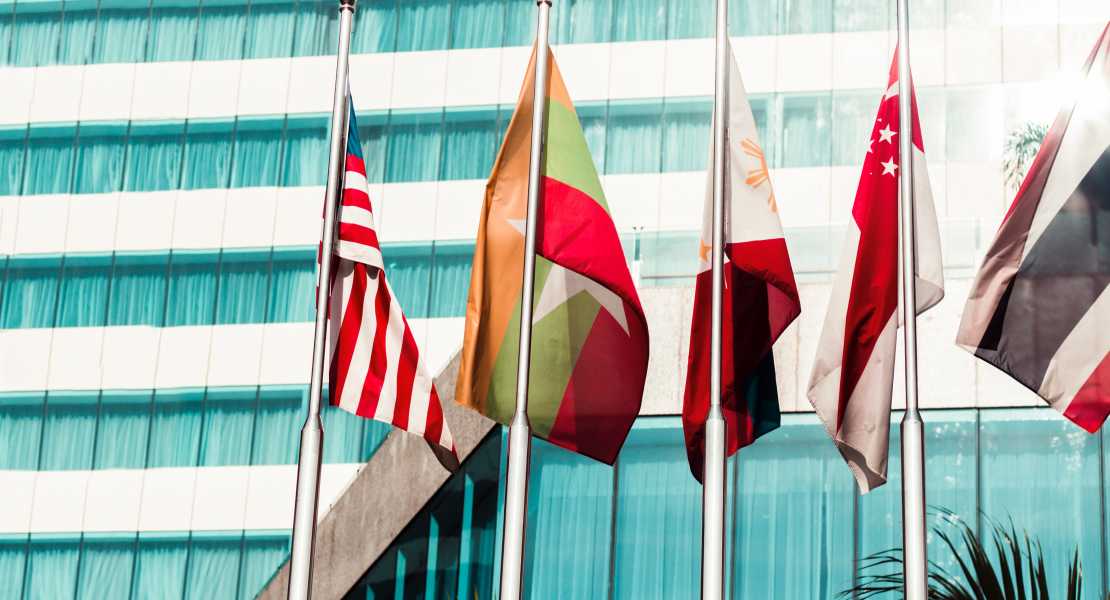The global ramp-up of international arbitration centres in the last three decades suggests a break in the monopoly of the international arbitration centres in North America and Europe.
I.Introduction
Historically, the definition of arbitration as “international” has meant that it involves the resolution of a dispute between parties from two or more states or the laws of a third State governs the arbitration as set out, for instance, in Article 1 of the UNCITRAL Model Law and Article V of the New York Convention 1958. This definition does not concern itself with whether the necessary infrastructure is in place to cater to this dispute settlement mechanism in St. Vincent and the Grenadines or in the Solomon Islands. Thus, for a long time international arbitration was not truly international in the global sense. Twenty years ago, very few legal systems globally possessed the necessary infrastructure to cater to international arbitration. International arbitration was reserved mostly for the metropolitan hubs of North America and Western Europe, where the thriving business environment, and the trans-boundary nature of many transactions, demanded such a dispute settlement mechanism. In Europe, most international arbitrations were split between the Permanent Court of Arbitration (PCA) in the Hague, the International Chamber of Commerce (ICC) in Paris and the London Court of Arbitration (LCIA) in London. Sweden’s Stockholm Chamber of commerce was another key European institution involved in the resolution of international commercial disputes. In North America, the American Arbitration Association’s (AAA) who had been administering dispute resolution since 1926, established the International Centre for Dispute Resolution (ICDR) in 1996 as a distinct body for international commercial arbitration. Yet, this institution mostly catered to international arbitration in the United States. However over the last three decades, as States have come to appreciate the benefits of providing for this dispute settlement mechanism, many have begun instituting the necessary infrastructure to provide their business communities access to international arbitration. Since then, many other countries have recognized the need for and established themselves as major venues for the conduct of the international arbitration. So, whereas many developing countries did not previously cater to international arbitration, today, we are witnessing a rapid increase in international arbitration centres globally.
II.An Increase in International Arbitration Centres Globally
1. Africa
African countries, for numerous reasons and with various degrees of intensity, historically articulated their reservations to arbitration. This is aptly illustrated in the antiquated nature of their arbitration laws until the 1990s. Until 1992 arbitration laws in Kenya (Cap. 49), Malawi (Cap. 6:03), Uganda (Cap. 55), Zambia (Cap. 180) and Mauritius (Cap. 164), were all modelled after the English Arbitration Acts (1854) or (1889). In 1992 only Swaziland had a national arbitration law, which was up to date, modelled after the English Arbitration Act (1979). By 2006, only six African States had promulgated domestic laws based on the 1985 UNCITRAL Model Law. Today, recognizing the importance of this dispute settlement mechanism in countries that are heavily dependent on foreign investment of which the preeminent dispute settlement mechanism is international arbitration, African countries such as Egypt, Kenya, Nigeria, South Africa and Rwanda are aiming to become part of the global international arbitration conversation. Even Mauritius, whose Arbitration legislation, prior to adopting its new arbitration legislation based on the UNCITRAL Model Law in 2008, was previously modelled after a 19th Century English Legislation, has sought to enhance its attractiveness as a sophisticated international arbitration jurisdiction. In 2010, Mauritius established the Mauritius International Arbitration Centre (MIAC) in partnership with the LCIA.
2. Australasia
Australia established the Australian Centre for International Commercial Arbitration (ACICA) in 1985, as the country’s international dispute resolution institution. New Zealand, too, has sought to establish itself as an international arbitration centre. With the advent of globalization and in the intensification of cross-border transactions in the 1980s and 1990s and the demand for this dispute settlement mechanism in these then emerging economies, Hong Kong established the Hong Kong International Arbitration Centre (HKIAC) in 1985 and Singapore established the Singapore International Arbitration Centre (SIAC) in 1991. Both these institutions have established themselves as major centres for the resolution of international commercial disputes. China’s International Economic and Trade Arbitration Commission (CIETAC) has also become an important arbitration institution. Formerly known as the Foreign Trade Arbitration Commission, CIETAC was set up in April 1956 under the China Council for the Promotion of International Trade (CCPIT) in accordance with the Decision Concerning the Establishment of A Foreign Trade Arbitration Commission Within the China Council For the Promotion of International Trade adopted on May 6, 1954, at the 215th session of the Government Administration Council. Since 2000, CIETAC is also known as the Arbitration Court of the China Chamber of International Commerce (CCOIC).
3. Middle East
The Middle East has also seen an influx of international arbitration centres in the last few years. Not wishing to be left behind, Abu Dhabi, Bahrain and Dubai have all established such institutions. Based on the tireless endeavours of the Abu Dhabi Chamber of Commerce and Industry (ADCCI) to provide every possible facility to its members in order to improve and stabilize their businesses. ADCCI established Abu Dhabi Commercial Conciliation and Arbitration Centre (ADCCAC) in 1993 to be the first centre in the Gulf Cooperation Council (GCC) to solve national and international commercial disputes, acting as an institute to solve commercial disputes effectively and rapidly whether through conciliation or arbitration assisted by specialists in this field as well as devoting its physical and moral capabilities to stabilize justice away from the complicated procedures within the framework of privacy and confidentiality, of which the traders are keen on in their dealings. The result of a partnership between the AAA and Bahrain’s Ministry of Justice and Islamic Affairs, the Bahrain Chamber of Dispute Resolution (BCDR) provides a formal system of ADR services in Bahrain. It administers the arbitration and mediation of commercial cases, including insurance, construction, financial services, and energy disputes. The centre’s role is entrenched in recently enacted legislation that made Bahrain the first country to offer what is being called a “free arbitration zone” and the first to introduce the concept of statutory arbitration for commercial and financial disputes. Bahrain’s unique ADR law establishes the Persian Gulf island nation as a neutral venue for multinational companies who choose to resolve their disputes through international arbitration. As a free arbitration zone, Bahrain offers jurisdictional and legal certainty to the recognition of arbitration awards. First created in 1994 as the “Centre for Commercial Conciliation and Arbitration”, the current Dubai International Arbitration Centre (DIAC) is an autonomous, permanent, non-profit institution. Located on the 14th floor of the magnificent glass quarters of the Dubai Chamber of Commerce & Industry (DCCI), the Centre provides the regional and international business communities.
4. Latin America and the Caribbean
Latin American countries have generally shied away from international dispute resolution. For this reason, international arbitration is not as sophisticated in Latin America as it is in other developing countries. Brazil, however, has sought to establish itself as the venue of choice for international arbitration in Latin America. In 1979, the Chamber of Commerce Brazil-Canada created the first Brazilian Arbitration Institution. Since then the Center for Arbitration and Mediation of the Chamber of Commerce Brazil-Canada (CAM-CCBC) transformed pioneering spirit into leadership, becoming the most popular arbitration institution in Brazil. In 2012, the CAM-CCBC new Arbitration Rules came into force, creating a simple notwithstanding solid base for faster and efficient dispute resolution. This revision includes well-grounded solutions for the growing complexity of the arbitration proceedings. CAM-CCBC has established cooperation agreements with arbitral institutions worldwide, such as Milano, Santiago, Lisbon, Brussels, Hong Kong, Cairo, and the Permanent Court of Arbitration, in Hague. The tradition and solid presence led to over 6.5 billion American dollars in disputes, and approximately 660 arbitration proceedings under CAM-CCBC administration until March 2016. In the last decade, the Caribbean, too, has seen has seen the intensification of the promotion of international arbitration. This has seen jurisdictions in the region begin to enhance their legal systems to accommodate the growing need for an international arbitration centre to service the region’s needs. Jurisdictions such as Bahamas, Barbados, Bermuda, British Virgin Islands, Dominican Republic, Jamaica and Trinidad and Tobago are all in the process of establishing the legal infrastructure that would enable them to capitalize on the increasing demand for a major international arbitration institution in this part of the world. So far, the BVI who established the BVI International Arbitration Centre (BVI IAC) in 2016 and Jamaica who established the Mona International Centre for Arbitration and Mediation (MICAM) in 2016 is on track to become the region’s two most sought-after institutions for international arbitration in the region.
III. Conclusion
This global ramp-up of international arbitration centres in the last three decades suggests a break in the monopoly of the international arbitration centres in North America and Europe. While the situation currently resembles a battle between David and Goliath, considering that institutions such as the ICC, LCIA and the ICDR, have a lead on the other institutions which have since been established, positioned correctly, arbitration centres outside the metropolitan hub have the potential to break the monopoly of these older institutions. This is not only essential in enhancing the legitimacy of this dispute settlement mechanism, which has seen its fair share of criticism, it is also essential in providing the international business community with more options to choose from.







